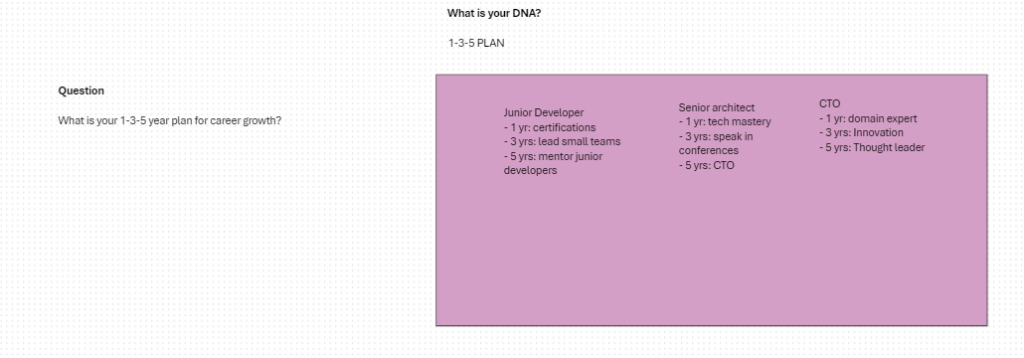
I had the opportunity to talk at the DevDays conference on the topic of CodeCraft Leadership: Hacking the DNA of Agile Teams.
I split the interactive workshop into 3 parts
- Company DNA
- Team DNA
- Your DNA
The third question was “What is your 1-3-5 year plan for career growth?”
How many of us know us 1-3-5 year plan? How many of us know the 1-3-5 year plan of our manager? Would the transparency of these plans on both sides make us work better together?
For example, when we discussed the 1-3-5 year plans of the Junior Developer, Senior Architect and CTO – we noticed that there were intersecting interests were each can help the other.
Just imagine instead of one year performance appraisals, we go deeper and understand the 1-3-5 year plans of our co-workers – we could make our workplace a place which leverages each of us towards where want to be.
Links:
DevDays, DevOps Pro & CyberWiseCon Europe 2024 (pinetool.ai)

